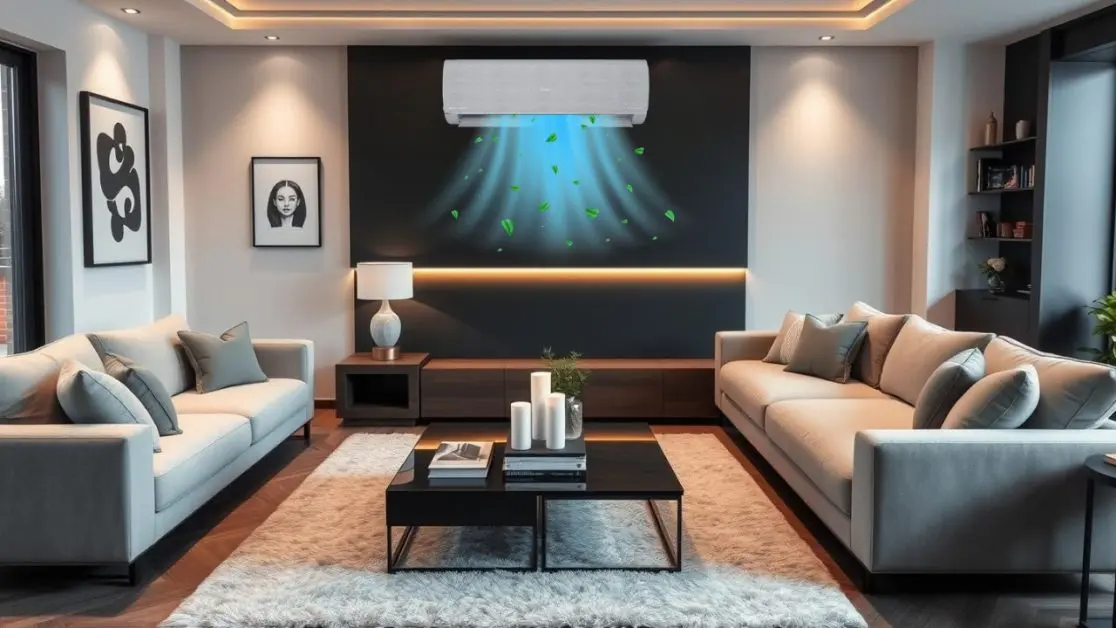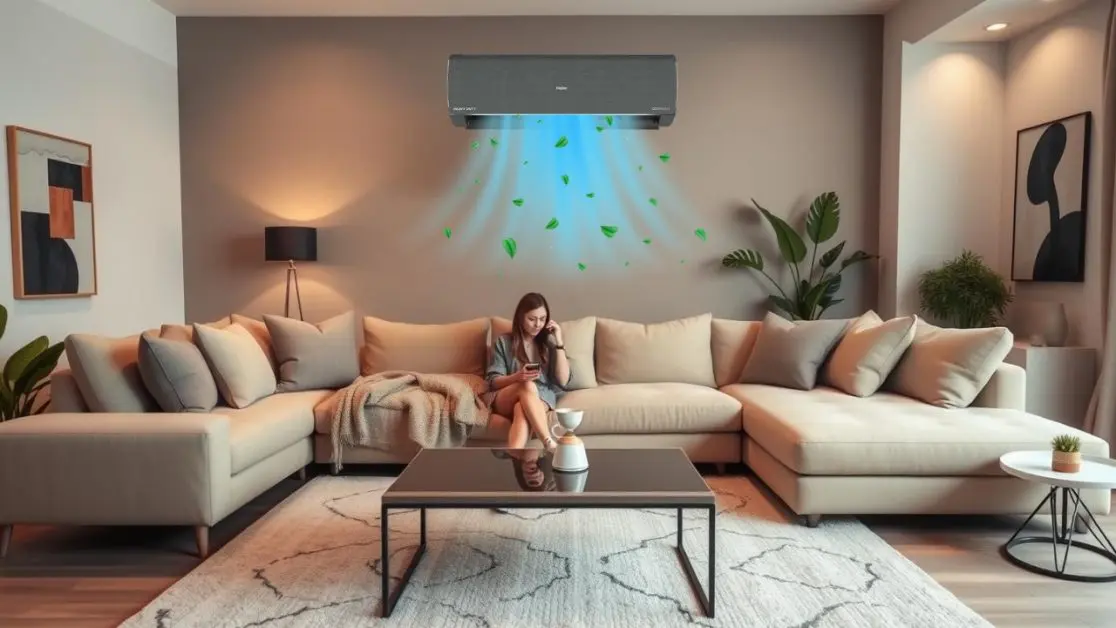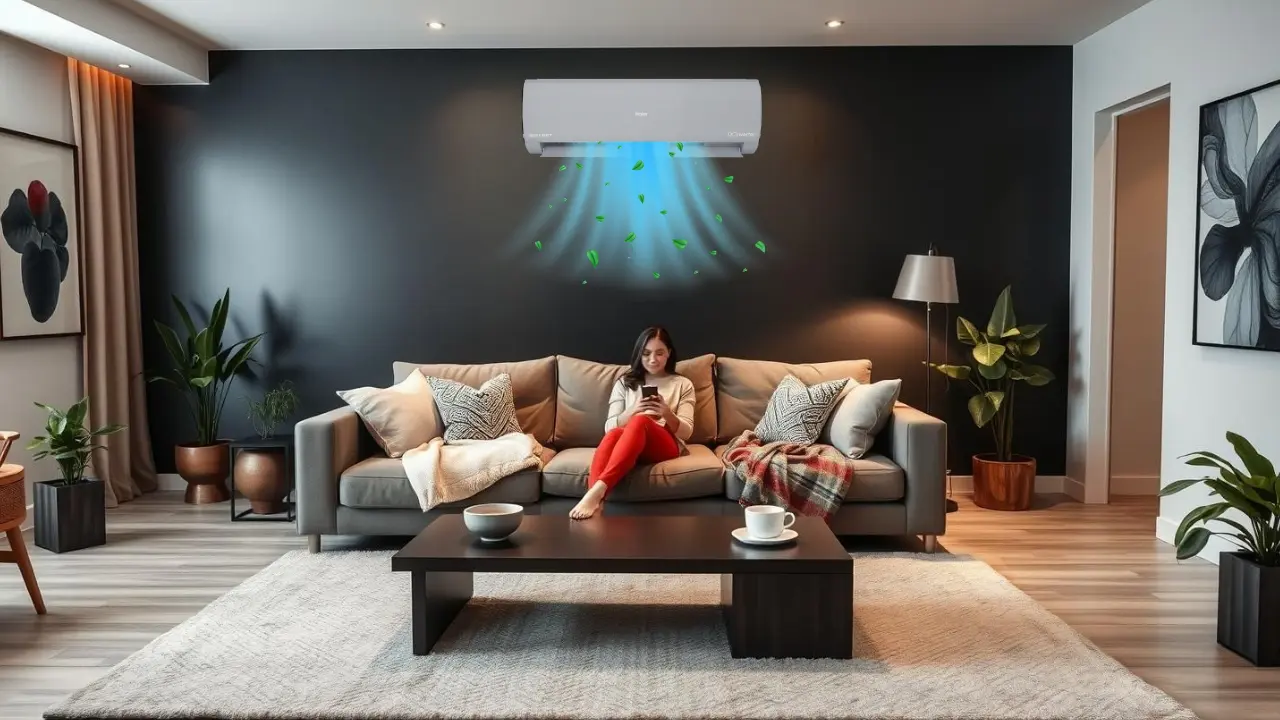Face it. Using an air conditioning device in Chennai is different from using one in Delhi. Of course, the intention is the same.
Getting ‘cooler’ and ‘comfortable’ is the goal. But how people utilize ACs, when to switch it (on), or which functions they use the most, that is a different story depending on where you live.
If you have ever thought about why your cousin from Hyderabad keeps the AC on almost all through the year while you only use it during peak summer in Gurgaon, this piece is for you.
We are not here to bore you with temperature charts or weather maps. This is about Indian homes and how they use ACs, and the ways in which air conditioners are getting smarter and better at adapting.
So whether you are stuck sweating through a humid evening in Kochi or you’re in Lucknow, blasting cold air after a hot train ride, this is how to adapt your life to make your AC work smarter for you.
It starts with geography, but it doesn’t end there

Let’s set the Scene.
Summers in Northern India: Searing heat and dry to the bone. Picture the afternoons soaring to a sweltering 44°C, with sizzling hot loo winds sweeping through.
Summers in Southern India: While the thermometer may not read as high, the humidity level is through the roof. Not only is it uncomfortable, but you are drenched in sweat. All. The. Time.
And that is where the difference starts.
These cities like Delhi or Jaipur often purchase an AC unit as a seasonal investment. It gets used in May, and it is forgotten about by mid-September. In Chennai or Mangalore, however, the AC is practically supplementary to one’s existence. Even at “comfortable” 32°C, the suffocating humidity makes it feel as if one has entered a pressure cooker.
This difference in weather regions would change anything relating to the daily use of an Air Conditioner.
1. Supersonic Cooling vs Relaxed Cooling Through the Passage of Time
Instantaneous cooling is enjoyed in North India. The instant you step into the room, you expect the cooling system to bring the temperature down to a comfortable level in under 10 seconds, because the heat outside is scorching, as dry as it is relentless. Most individuals expect the AC to operate in hyperdrive, efficiently pumping and cooling the whole room to comfortable levels before shutting off.
Supersononic cooling is exactly matched to this need. It offers the instant burst of chill required using a compressor that gains full headroom from the very start. If you are the type to come home soaked with sweat, only to have the oppressive heat have merciless air blasting at you feel sweltering until the AC kicks in, this feature is superb.
In contrast, South India focuses on consistency of the room climate while using ACs. There is no need for frosty air. What is needed is the ability for the AC to maintain the dryness at lower humid levels, comfort levels high, and the noise kept low to zero. Let’s be honest, the AC is probably running 8 to 10 hours continuously.
That’s where the AI-enhanced convertible functions really stand out. With 7-in-1 Intelli Convertible AC, your mood, the weather, and even the time of the day can guide the cooling capacity. In the afternoon, you can go full turbo and then drop to 40% at night. Better yet, all this happens automatically.
2. Long Air Flow: High Ceilings Vs Compact Apartments

Finding larger bedrooms or whole independent houses in Chandigarh and Noida with greater ceiling height is quite common. Evenly cooling a large area is no easy feat.
That’s where Long Air Flow design is useful. Due to enhanced fan motors and better duct design, air can reach up to twenty meters. Every corner of your living room will remain cool. Add the Turbo mode on top and you get a pretty powerful combination.
In the South, where buildings like flats and apartments are smaller in size, this additional range of airflow is still beneficial, but the greater win here is the quietness and the higher efficiency of the unit. Having an air conditioning unit that sounds like a washing machine on a full spin in the dead of night is intolerable.
3. Cleaning Frequency: Once Per season Versus Every Few Weeks
Another difference of note is the frequency of cleaning the ACs. In North India, where usage is seasonal, most people clean the AC once before summer commences and once postseason.
In contrast, South ACs are used for longer periods throughout the year. Regular cleaning is important, but let’s face it, no one is calling the technician on a monthly basis.
Such humid climates make Frost Self Clean technology and Complete Indoor Wet Wash useful. The dust, bacteria, and peculiar odor resultant from prolonged usage get removed without the need of manual effort.
Filters getting clogged is a common issue faced by the residents of Kochi and Chennai, which makes these places highly humid. Filter cleaning suffices for sanitation; hence the needfulness makes it essential, verging on critical.
4. Energy Efficiency: Noticeable Spikes in Energy Consumption Vs Constant Monitoring

Now let’s shift our focus towards the electricity expenses. People in North India expect a lot more value during the brief period of usage, so their focus shifts entirely on value-for-money during that period.
In the South, air conditioning consumption is nearly ubiquitous, so energy efficiency matters more in the long-term. The effect of running your AC for over 300 days a year will be significant.
That is the reason why HEXA Inverter and AI ECO Mode are so noteworthy. With HEXA Inverter, energy use can be reduced by 65% because the compressor will only run as much as needed. Its not “off” or “on”. It’s “on” in a smarter way.
AI ECO goes further by tracking consumption, setting targets, and notifying you when you are about to exceed them. Consumption per hour, day and week is displayed in various graphs. All this, on mobile.
You are not saving much on electricity, which is why this feature will be helpful after being shocked by a ₹4000 electricity bill.
5. Performance Under Pressure: High Heat vs High Humidity
In regions like Rajasthan or parts of UP, outside temperature reaches 48 ° C during peak summer frequently. Not every air conditioner can handle that kind of heat.
ACs can operate at extreme outside temperatures of 60 degrees celsius making them ideal for locations suffering from heat waves. The robust capacitor and larger heat sink ensure your AC will not fail during crucial times.
In South India loss of the AC unit is not a concern, rather the constant humidity and moisture. There is where internal durability and protection against corrosion comes into play.
Anti-Corrosion Aqua Blue Coating, Blue Fin Coils, and plastic grills ensure the constant assault of rust, salt and wear is defended against. These features are crucial for coastal cities such as Vizag and Kochi which suffer from rapid corrosion.
6. Lifestyle Habits: Comfort First vs Tech Friendly

The tech friendly lifestyle is prevalent in metro areas of banglore, bombay and pune. These folks are adopting smart home technologies, amazon alexa integrations and monitoring their energy consumption.
Smart features to monitor air quality, voice activated control and wifi enabled interfacing will surely be appreciated and gain exposure.
Opposing this, focus value for money and efficient operation takes the spotlight in tier 2 cities of North and central India. Long lasting, reliable cooling, and low maintenance are must haves to the other side.
It’s all there if you want smart tracking paired with auto modes or heavy-duty, no-nonsense cooling.
How to Choose the Right AC Based on Your Location
Here is an overview chart for quick comparison.
| Requirement | North India (Delhi, Jaipur, Lucknow) | South India (Chennai, Kochi, Bengaluru) |
| Cooling Speed | Supersonic Cooling, Turbo Mode | Moderate, sustained cooling |
| Usage Pattern | 4 to 5 months of intensive usage | year-round usage |
| Humidity Control | Low priority | Very important |
| Cleaning Needs | Seasonal | Frequent (uses Frost Self Clean) |
| Energy Saving | Required during summer | Required year-round (AI ECO helps) |
| Room Size | Large or high-ceilinged | Often compact |
| Smart Features | Optional | Voiced controlled and app enabled features not preferred Optional |
| Durability (Moisture/Heat) | Needs heat resistance (60°C) | Needs anti-corrosion protection |
Final Thoughts: One AC Cannot Fit All Users
It would be unreasonable to think about standardizing air conditioning systems for all houses in India given the country’s diversity. What serves someone living in Gurugram does not apply in Coimbatore. Personal and regional, precisely and ideally, cooling systems should be tailored.
Be it dry heat, suffocating humidity or both. An AC that can tune itself, clean, power save, and even learn your daily routine exists now.
Let us first consider your usage habits if you are looking to upgrade your air conditioner this year. Examine your family’s behavioral patterns with the AC such as durations, timings, and which features are most used. Find a machine that caters to these needs.
Looking for one that actually ticks all those boxes?
Smart, durable and energy efficient air conditioners by Haier India are tailored to technologically advanced and vibrant Indians while keeping their energy needs in mind. From the sultry coasts to the arid plains, ACs for authentic Indian homes and Indian summers.
Check out the complete collection of air conditioners by Haier India today, cooling is not only about defeating the heat but also about your own distinctive methods.

